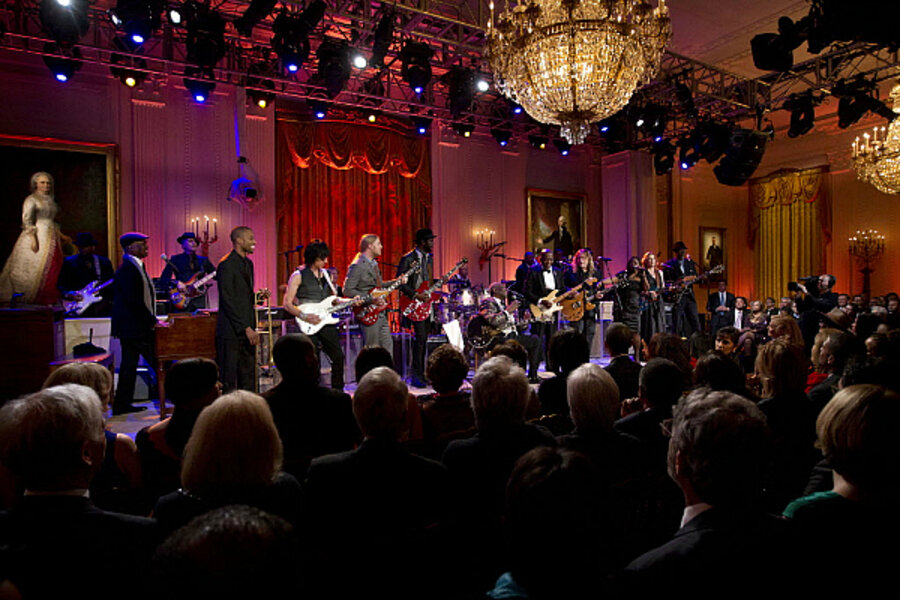Want to hear Obama sing the blues? Best chance is tonight on PBS.
Loading...
Will President Obama sing Monday night on national television? We think there’s a pretty good chance the answer to that is yes. Mr. Obama crooned a few bars of “Sweet Home Chicago” during the taping of “In Performance at the White House: Red, White, and Blues,” which will be broadcast on PBS the evening of Feb. 27. We’d lead the show with that, if we were the producers.
After all, few presidents have had a chance to sing along with both B.B. King and Mick Jagger, on the same song.
But many presidents have enjoyed White House musical events. In fact, the White House is perhaps the nation’s oldest showcase for the performing arts.
“It’s a stage like no other,” writes musicologist Elise Kirk in her book “Music at the White House: a history of the American spirit”.
When Mr. Obama hosted blues singers for a concert held in conjunction with Black History Month he was continuing a long history of such musicales. The US Marine Band performed at the first White House public reception, held on New Year’s Day 1801, during the John Adams administration.
The golden age of White House music was the early 20th century, writes Ms. Kirk. Steinway & Sons donated a magnificent concert grand piano to the White House in 1903, and great pianists such as Josef Hofmann and Ignacy Paderewski played it for President Theodore Roosevelt and his family.
As the decades rolled on, the diversity of American popular music became more prominent. Dwight Eisenhower’s after-dinner entertainment for Chief Justice Earl Warren in 1958 featured then-current Broadway tunes, according to the White House Historical Association.
President Kennedy and his wife were intensely interested in the arts – and the media were intensely interested in them. The result: White House concerts for the first time received television exposure, setting a pattern that continues to this day.
The current PBS series of hour-long programs broadcast from the East Room began in the Carter administration. The first was a 1978 performance by pianist Vladimir Horowitz. Since then the series has featured artists from Linda Ronstadt to Lou Rawls, Leontyne Price, and Larry Gatlin.
Which presidency produced the most PBS performance shows? That’s easy – Ronald Reagan’s. As the only professional performer to win the Oval Office, he hosted 17. The last was a salute to Broadway recorded Aug. 6, 1988, directed by the great Marvin Hamlisch.







